This post, part of our Walk This Way series, shares The Walking Classroom experiences of teachers and students across the United States. This post provides a glimpse into Kim Collazo’s class.
Recently our fourth grade STEM Walking Classroom Club chose to listen to Geology (Complete-#132, 5-#74, STEM- #15). Since they will study rocks and minerals a little later this year, I was excited about this choice. What a great opportunity to preview this topic!
Students Dig Deeper
In the STEM Walking Classroom Club, students who score the highest on the week’s podcast quiz get to choose the topic for the next week. Two students, who both got 100% for the first time this year, wanted to learn more about the scientists who study geology. For this reason, they chose the podcast about Dr. Emlyn Koster (4-#100, 5-#106, STEM-#49), a geologist from the North Carolina Museum of Natural Sciences.
Sharing Some Student Findings
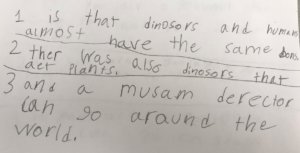 After a beautiful, sunny walk on our school’s field, I had the students write down the three most important things they had learned. The kids were buzzing with conversation as we returned to the STEM lab to write what we’d learned.
After a beautiful, sunny walk on our school’s field, I had the students write down the three most important things they had learned. The kids were buzzing with conversation as we returned to the STEM lab to write what we’d learned.
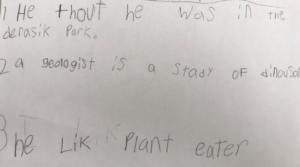 I have shared two responses here. As you look at the responses, remember that many of the students are English Language Learners. They impressed me with the facts they remembered and chose to share!
I have shared two responses here. As you look at the responses, remember that many of the students are English Language Learners. They impressed me with the facts they remembered and chose to share!
Previewing Content Pays Off
Thanks to the preview The Walking Classroom podcasts provided, when these students begin their unit on rocks and minerals, they will have some schema/background knowledge on which to attach their new learning. They will be able to refer back to what Dr. Koster talked about during our walk, and the conversations we had on our way back to the lab. This preview will give them an edge in mastering the new science content with their classroom teacher.
. . . for STEM Coordinator too!
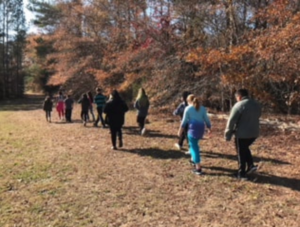 This experience also allows me to plan an integrated STEM lesson. When the fourth grade teachers are conducting the hands-on geology and fossil lessons that go along with the upcoming unit, I will be able to support that learning.
This experience also allows me to plan an integrated STEM lesson. When the fourth grade teachers are conducting the hands-on geology and fossil lessons that go along with the upcoming unit, I will be able to support that learning.
I will have the students engineer new museum exhibits, just like those at the North Carolina Museum of Natural Sciences that Dr. Koster talked about. What a great way for the students to apply what they’ve learned both in the classroom and during our walks!
Happy Trails!
Kim Collazo
STEM Coordinator
Robbins Elementary


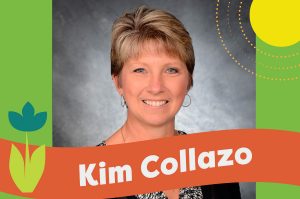
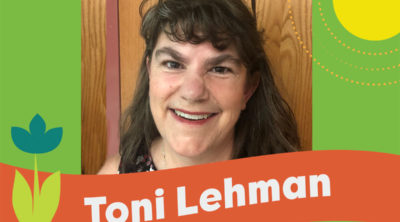
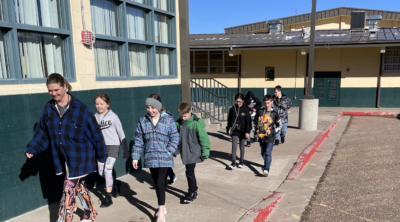
Leave a Reply